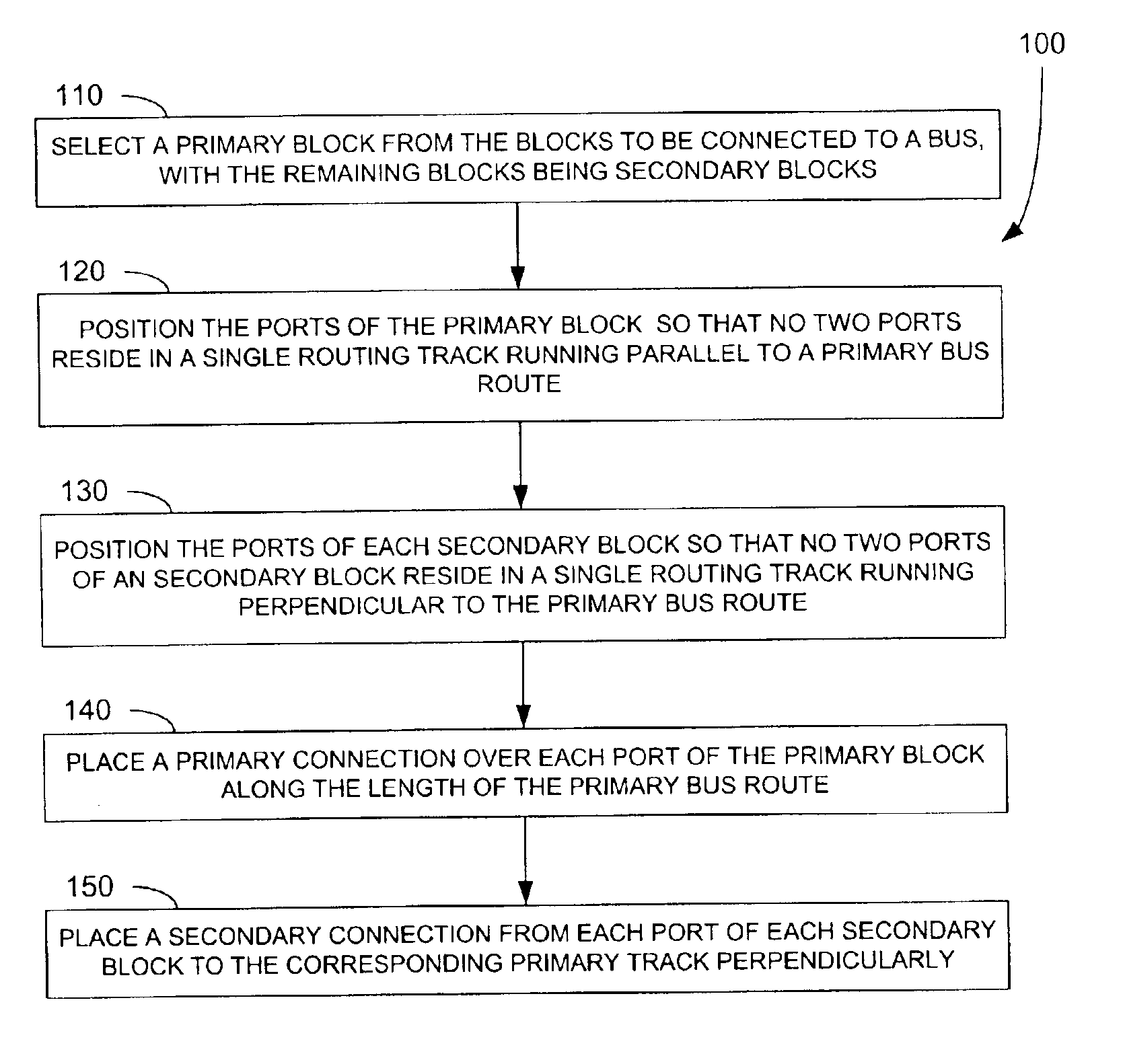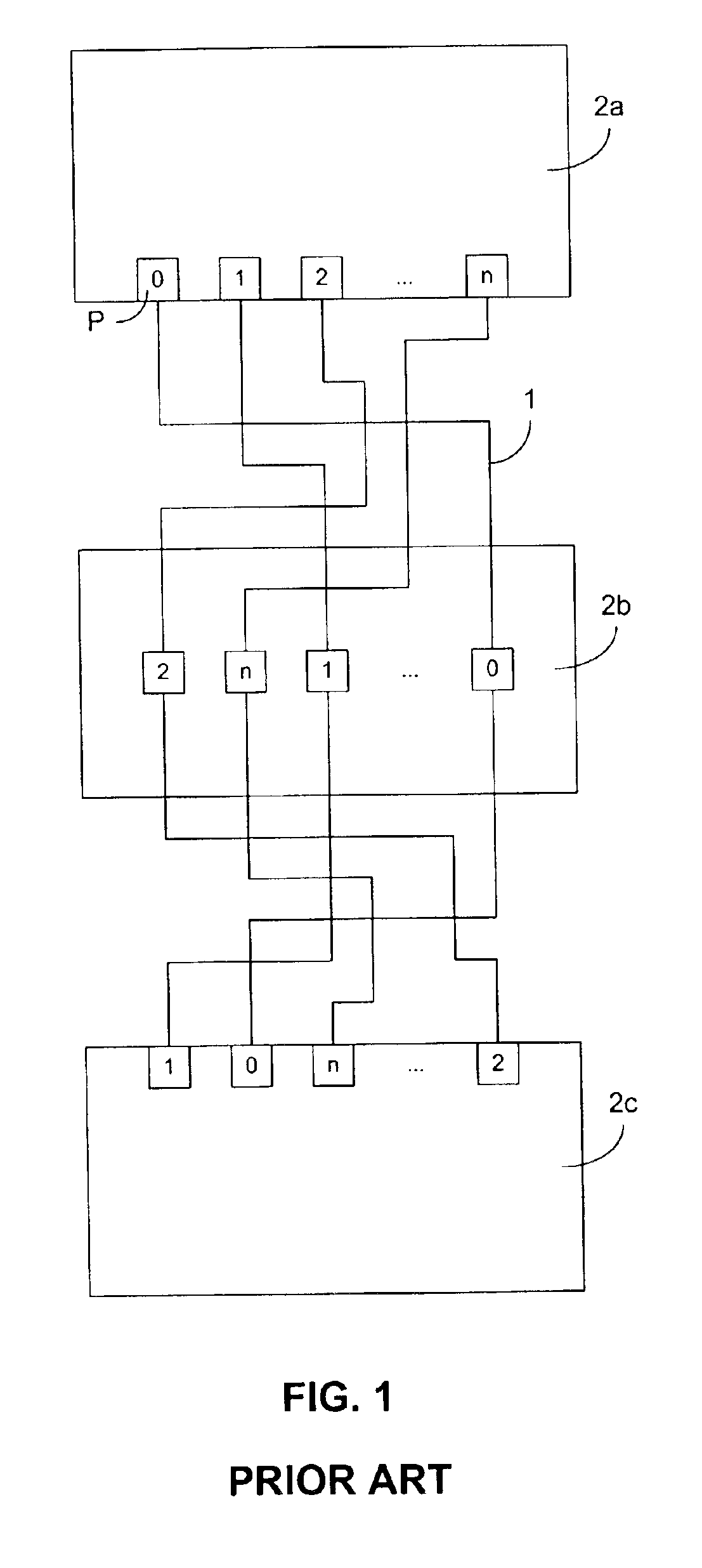Integrated circuit routing resource optimization algorithm for random port ordering
a technology of integrated circuits and routing resources, applied in the direction of electric digital data processing, instruments, computing, etc., can solve the problems of large amounts of limited routing resources, exacerbating routing problems, routing problems, etc., and achieve the effect of efficiently routing an ic signal bus and minimizing the consumption of routing resources
- Summary
- Abstract
- Description
- Claims
- Application Information
AI Technical Summary
Benefits of technology
Problems solved by technology
Method used
Image
Examples
Embodiment Construction
[0014]A simplified embodiment of the invention is shown in FIG. 3, using the method 100 for routing an IC signal bus, as shown in FIG. 6. Three circuit blocks 12a, 12b and 12c of an IC are aligned vertically. Ports P, numbered 0 through n, of each block are to be connected by way of a signal bus. In order to promote efficient utilization of the routing resources of the IC while allowing a measure of design freedom in the location of the ports P of each block 12, one of the circuit blocks 12 is selected as a primary block (step 110 of FIG. 6). In the specific example of FIG. 3, circuit block 12a is designated as the primary block, with the remaining blocks 12b and 12c thus being defined as secondary blocks.
[0015]The ports of the primary block are then positioned so that no two of those ports reside in the same routing track running parallel to a primary bus route (step 120 of FIG. 6). With respect to FIG. 3, the primary block 12a has ports P aligned along the bottom edge of the block...
PUM
 Login to View More
Login to View More Abstract
Description
Claims
Application Information
 Login to View More
Login to View More - R&D
- Intellectual Property
- Life Sciences
- Materials
- Tech Scout
- Unparalleled Data Quality
- Higher Quality Content
- 60% Fewer Hallucinations
Browse by: Latest US Patents, China's latest patents, Technical Efficacy Thesaurus, Application Domain, Technology Topic, Popular Technical Reports.
© 2025 PatSnap. All rights reserved.Legal|Privacy policy|Modern Slavery Act Transparency Statement|Sitemap|About US| Contact US: help@patsnap.com



